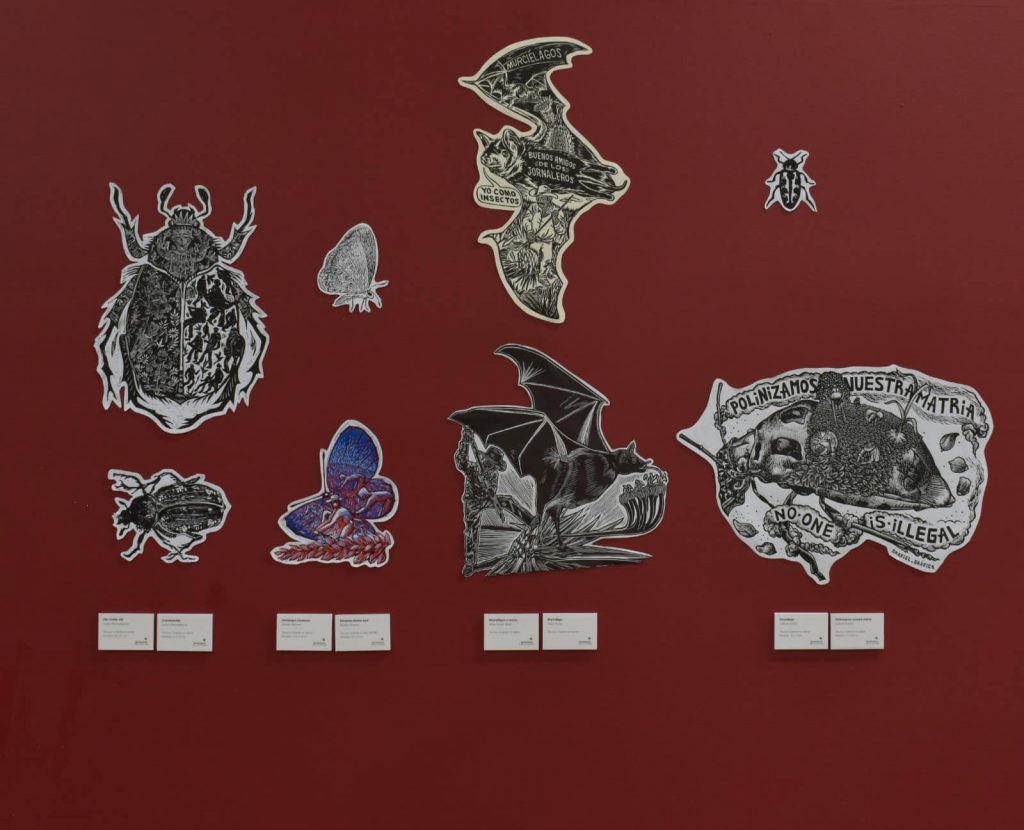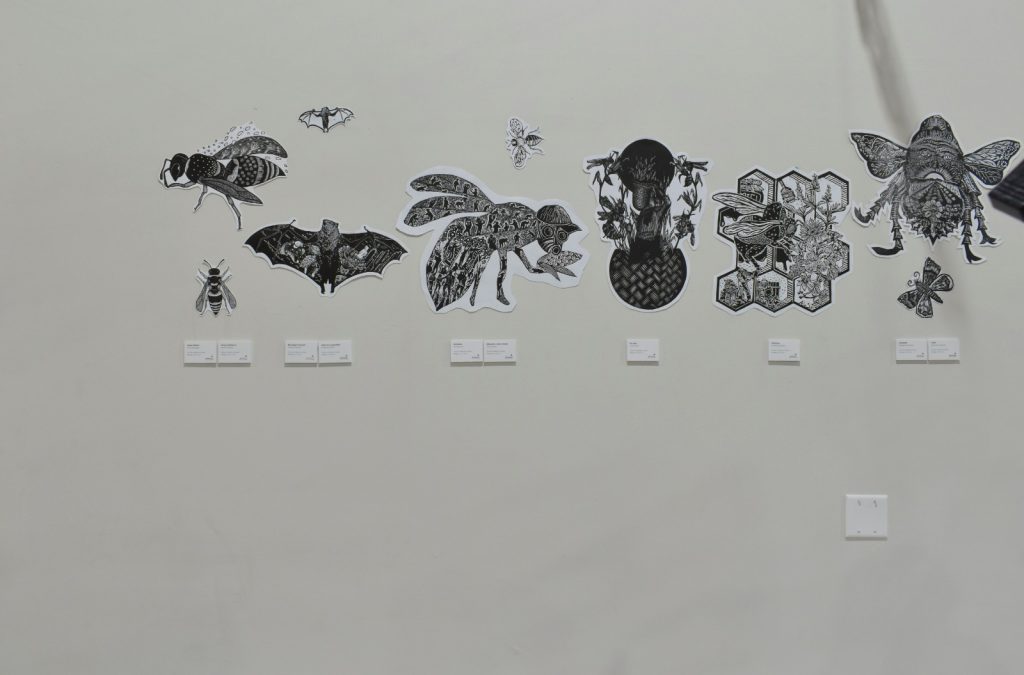Luis Felipe Reynoso / Quadratine
Morelia, Mich., June 15, 2023. — After the collectors’ fair opens. A pollination graphic, on June 10 at the Michoacán DuPage House in West Chicago, will be presented in November at the UNAM Cultural Center in Morelia, graphic artist and part curator of this event, Mizraim Cárdenas, Quadratín revealed.
He noted that this recently opened exhibition is an artistic proposition that bridges art, science and sociology, and consists of bas-reliefs by 55 authors based in Michoacan and Chicago, most of whom are of Michoacán ancestry.
“This is to strengthen our commitment a little bit with the federation (of the Michoacán clubs), to participate and have cultural projects, in this case the area where I work, which is the visual arts.”

He pointed out that it is about generating projects for communities and for the general public, but they are also projects with educational meaning, in this case talking about pollinators, and for this, he explained, they contacted the National Laboratory of Ecological Synthesis (Lanase) of the ENES UNAM Morelia campus.
The academic explained that in coordinating this event, an organizing committee that included, in addition to him, Dr. Mauricio Quezada. José Luis Gutierrez, who was at one time the secretary of the immigrants in Michoacan; academic Ivan Mendoza; and Chicago artist Rene Arcio.
The artist expressed the thought of searching for a problem, which in this case was science and technology with pollinators, which is affected in a very radical way by agrochemicals, but also by climate change, and from this he generated a series of conversations and interviews with artists, in order to generate images that include works immigrants.

This work was about day laborers, said Mizraim Cardenas, who works in the southern US with crops, “So we saw it as a symbiosis where if there is no pollination, there is no crop, and for there to be a harvest they have to be day laborers, and that’s why they were He put that part of “Without pollination there is no life,” due to the fact that we are running out of food.”
He said they also worked with a group of artists they called The Links. They were responsible for working with certain artists and inviting others. He emphasized that the number had to be reduced to 55 participants to avoid problems with logistics.
They focused on artists who were printmakers, but also wanted to be inclusive, he said, noting that visual arts students were invited.
In this case, they were from the University of Michoacana and the National Postgraduate School (ENES) of the Morelia UNAM campus, with the dynamics of teamwork, “because this in itself is teamwork,” he said.
The idea was to work with the silhouette of the pollinator, and within it, to deal with an aspect that had to do with immigration, with day laborers, with the American Dream and what it meant to be an immigrant worker in the United States.

Each artist worked on it in their own way and their pollinators were recognized. What they tried was not only using bees as the main pollinators, but opening them up away from insects, generally to other species.
He emphasized that this is not looking for cultural spaces par excellence as a main interest, but rather looking for social spaces, where the work community carries this type of graphics, which means to a large extent the generosity of the artists themselves.
“If you see how the images are, they are cropped to be able to make it easier to use the space, because we no longer have to work in a frame, in a box where you have to find the height or certain things, and that allows you to make the most dynamic spaces.”
The exhibition will be presented in Morelia on November 1 at the UNAM Cultural Center, and for this the same dynamics that were made last year will be implemented: groups will be invited to make interventions, they will be assigned a certain number of images of pollinators, and they will play with them in space.






More Stories
“Those who go to museums but do not see an oak tree in the countryside should blush.”
Michoacana Science and Engineering Fair 2024, When the Call Ends – El Sol de Zamora
Dr. Miguel Kiwi, winner of the National Science Award, gives his opinion on nanoscience in Chile